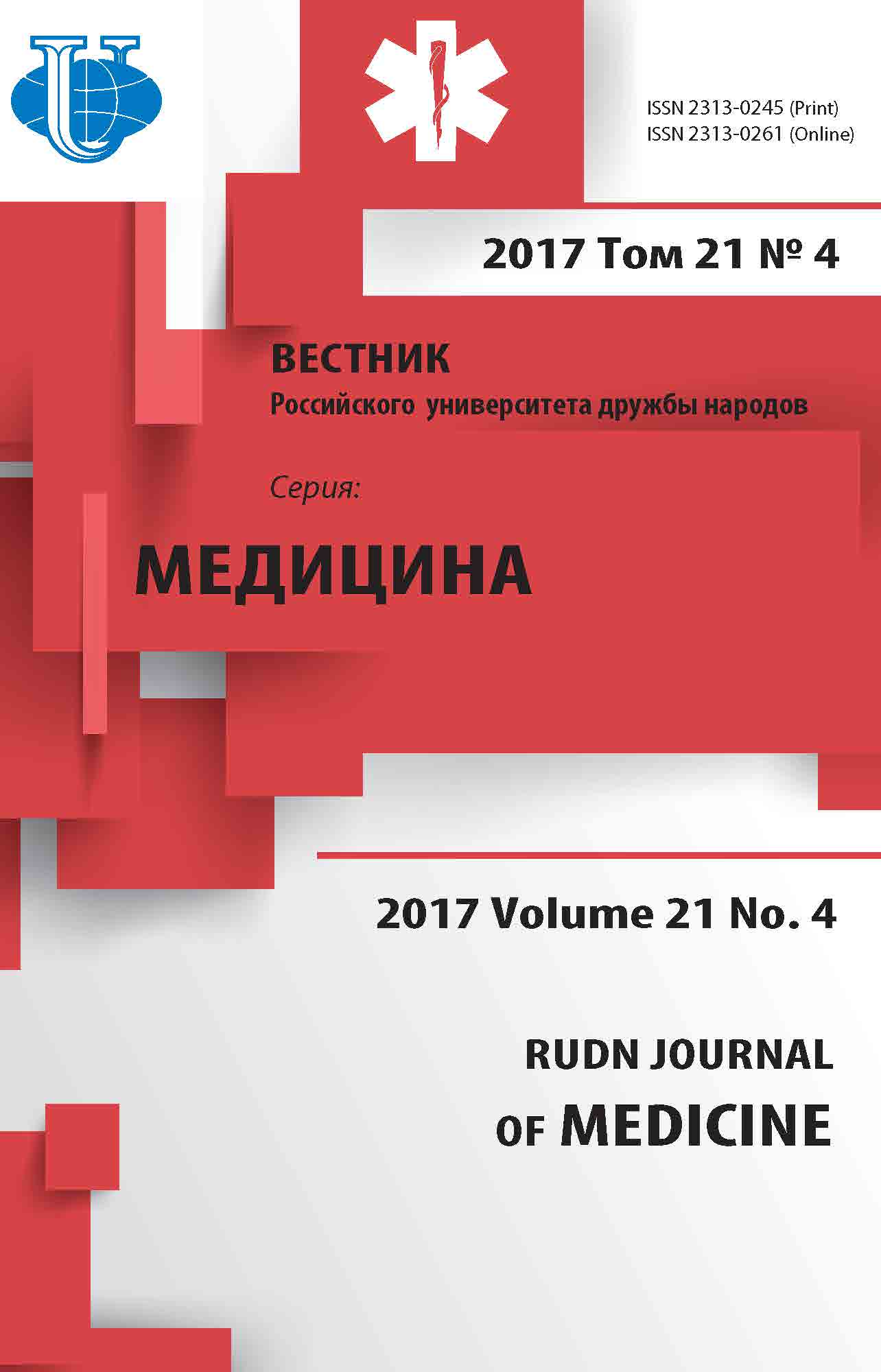INFLAMMATION AND MALE INFERTILITY. WHAT’S IS COMMON?
- Authors: Kulchenko NG1
-
Affiliations:
- Peoples’ Friendship University of Russia
- Issue: Vol 21, No 4 (2017)
- Pages: 402-407
- Section: Articles
- URL: https://journals.rudn.ru/medicine/article/view/17676
- DOI: https://doi.org/10.22363/2313-0245-2017-21-4-402-407
Cite item
Full Text
Abstract
All researchers identify the idiopathic forms of male infertility, which can hardly be cor-rected. Objectives: toidentify additional links to pathogenesis of idiopathic male infertility. Materials and methods of research: were examined 24 (54,5%) men with idiopathic non obstructive azoospermia. The comparison group was formed by 20 (45,5%) healthy male volunteers. In order to identify additional links of pathospermia pathogenesis, was determined the leucocytes activity in peripheral blood of patients. Results: in patients with pathospermia reliably more total number of WBC and higher production speed of reactive oxygen species by leukocytes for the selected time interval, in comparison with healthy men (p < 0,05). Conclusion: one of the reasons of non-obstructive azoospermia is chronic inflammations, which induce oxidative stress.
About the authors
N G Kulchenko
Peoples’ Friendship University of Russia
Author for correspondence.
Email: svgur@mail.ru
Кульченко Нина Геннадьевна - кандидат медицинских наук, врачуролог, старший преподаватель кафедры гистологии, цитологии и эмбриологии Медицинского института РУДН
References
- Fraczek M., Kurpisz M. Mechanisms of the harmful effects of bacterial semen infection on ejaculated human spermatozoa: potential inflammatory markers in semen. Folia Histochem Cytobiol. 2015 53(3):201—17.
- Isaiah I.N., Nche B.T., Nwagu I.G, Nnanna I.I. Current studies on bacteriospermia the leading cause of male infertility: a protégé and potential threat towards means extinction. N Am J Med Sci. 2011. № 3. Р. 562—564.
- Lu Y., Bhushan S., Tchatalbachev S. Necrosis is the dominant cell death pathway in uropathogenic Escherichia coli elicited epididymo-orchitis and is responsible for damage of rat testis. PLoS One. 2013. V. 8. № 1. P. 529—549.
- Havrylyuk A., Chopyak V., Boyko Y. Cytokines in the blood and semen of infertile patients. Cent Eur J Immunol. 2015. V. 40. № 3. P. 337—44.
- Schulz M., Sánchez R., Soto L. Effect of Escherichia coli and its soluble factors on mitochondrial membrane potential, phosphatidylserine translocation, viability, and motility of human spermatozoa. FertilSteril. 2010. № 94. Р. 619—623.
- Jungwirth A., Giwercman A., Tournaye H. European Association of Urology guidelines on Male Infertility: the 2012 update. Eur Urol. 2012. № 62. Р. 324—332.
- Kaprin A.D., Kostin A.A., Kul'chenko N.G., Fomin D.K., Aliev A.R.O. Diagnosis of idiopathic infertility. What's new? Bulletin of the Russian research center of roentgenology and radiology, Ministry of health of Russia. 2014. № 2. С. 3.
- Kulchenko N.G., Kostin A.A., Samsonov Ju.V., Demjashkin G.A., Moskvichev D.V. Forecasting reserve testicular function in patients with non-obstructive azoospermia. Study and practice in medicine. 2016. Т. 3. № 3. С. 42—48.
- Gromov A.I., Bujlov V.M. Radiation diagnostics and therapy in urology: national manual. M.: GOJeTAR-Media. 2011. 544 с.
- Dendeberov E.S., Vinogradov I.V. Experience with the use of biocomplex “Andradas” for fertilization in patients with idiopathic pathospermia. Effective pharmacotherapy. 2014. № 41. С. 24—27.
















